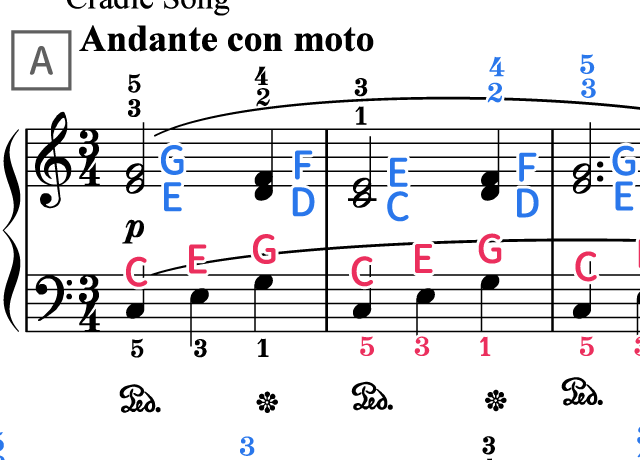How To Play (How To Practice)
1. Level : 2(Easy 2)
The difficulty is the same as that of the latter half pieces of "Burgmüller 25 Easy and Progressive Studies(Op.100)".
You need some techniques like that of No.25: "My lady's ride".
This piece is a little bit easier than Beethoven: "For Elise", and a little bit harder than his "Turkish March" or Ellmenreich: "Spinning Song".
2. Cradle Song
1. How to Practice Thirds


1. Right Hand Practice
Though the tempo is slow, thirds might be hard for beginners.
Shape a form of your hand correctly and keep it fixed. Then, put your fingers down on the keys according to finger numbers.
Check out the fingering sheet!
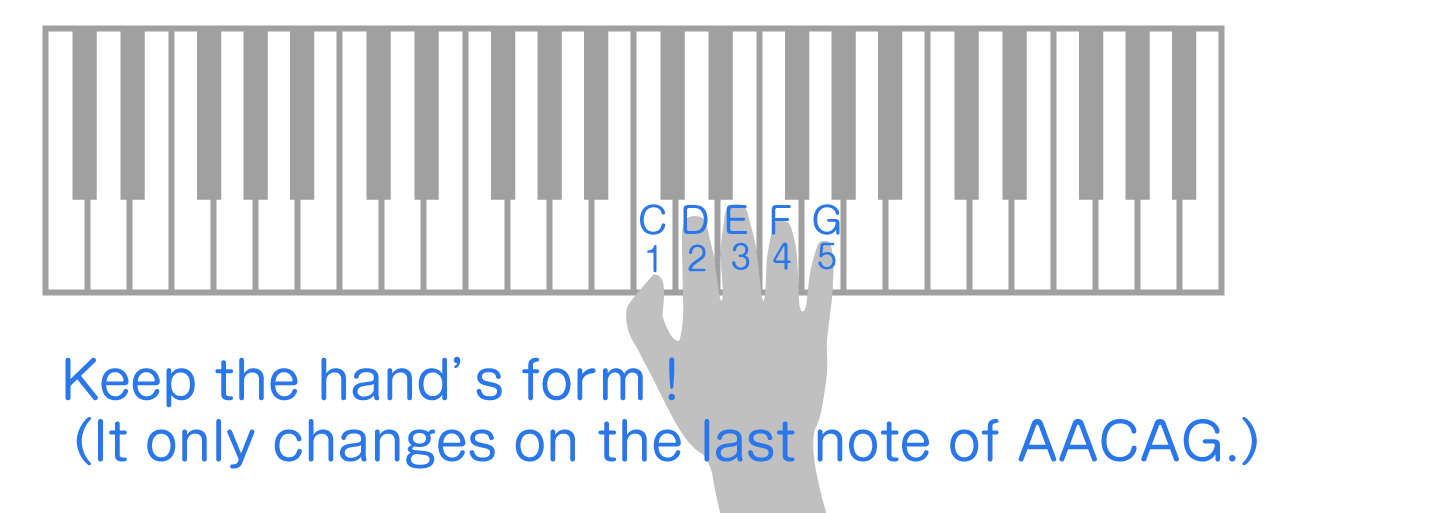
- Legato(connect the sounds smoothly)
- To make higher notes(G-FE-FG-) clear
- To control the dynamics of the phrase
Practice in order above.
It's hard to make everything perfect so let's try as best as you can!
How to Make the Higher Notes Clear[Optional]
When you get used to the phrase, shift your right hand's weight to the side of the pinky finger. And you can make higher notes sound clearly.
It may be a good way to practice the right hand part with both hands (the higher notes with the right hand, the lower with the left) to listen to and learn good sounds.
2. Left Hand Practice
If you feel the left hand is hard, shut the fallboard of the piano, move your left hand fingers and play the left hand part with silence on the fallboard.
This is the basic exercise to move fingers correctly. When you become able to move your fingers stably, play on the keyboard.
3. Both Hands Practice
When you practice the piano, the most basic and important thing is to practice slowly, little by little and with no mistakes. You must never practice in fast tempo. Such a practice may cause you to mistake. And also you should not practice through the long phrase let alone the whole at the outset.
If you play the wrong note, your body remember and learn the sense of its moment. It is negative practice. So it is important to practice slowly and little by little enough to play with no mistakes.
2. How to Crossing the Hands
When you cross the hands, pass the right hand over the left hand not to touch each other and you can play comfortable.


3. Dolly's Dream
1. How to Practice
1. Right Hand Practice
This part might be hard because you need to change your hand's form in some ways.
So keep correct fingering.
Use the fingering sheet!

2. Left Hand Practice
You may make inner voices with staccato softer or lighter while holding the bass. (It is little bit hard. Let's try!)

Here is an optional practice of the rhythm which is easy to keep the bass. Let's try!
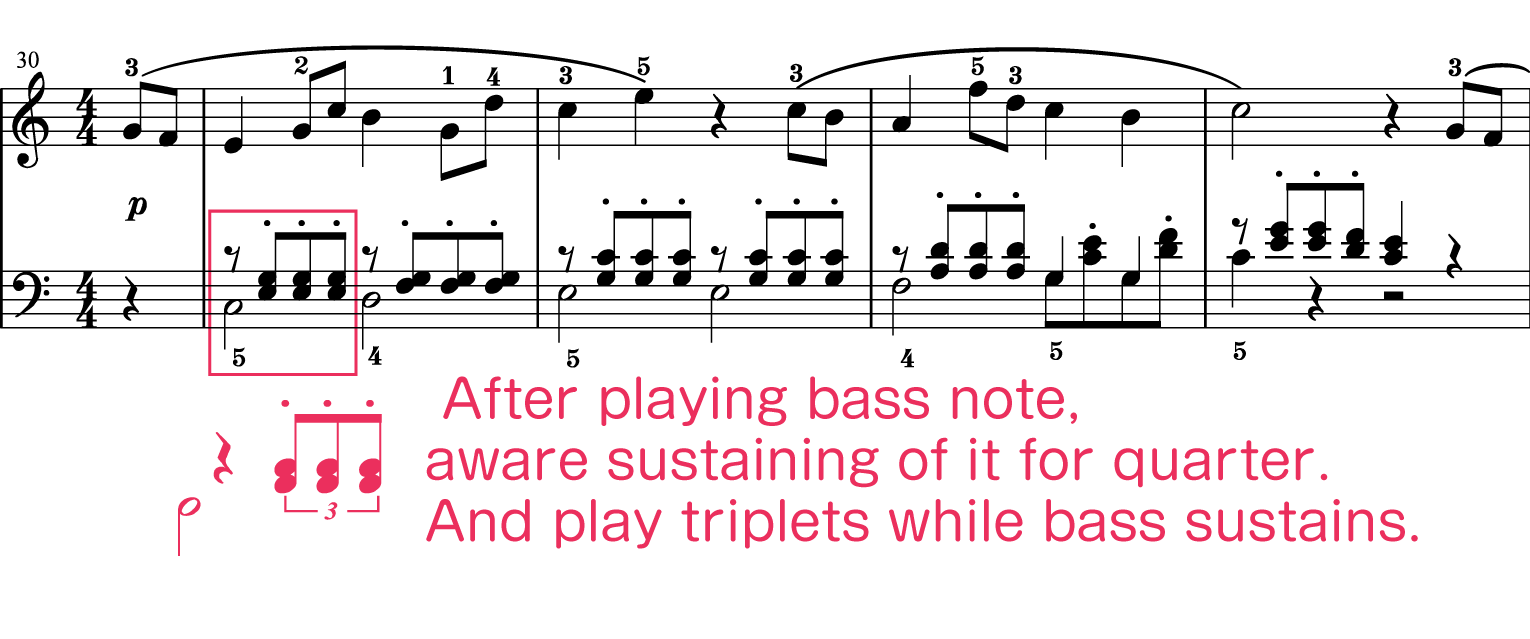
3. Chords and Melody by Rhythm Simplification[Optional]
If you feel the accompaniment is hard, try the simplification like below first.
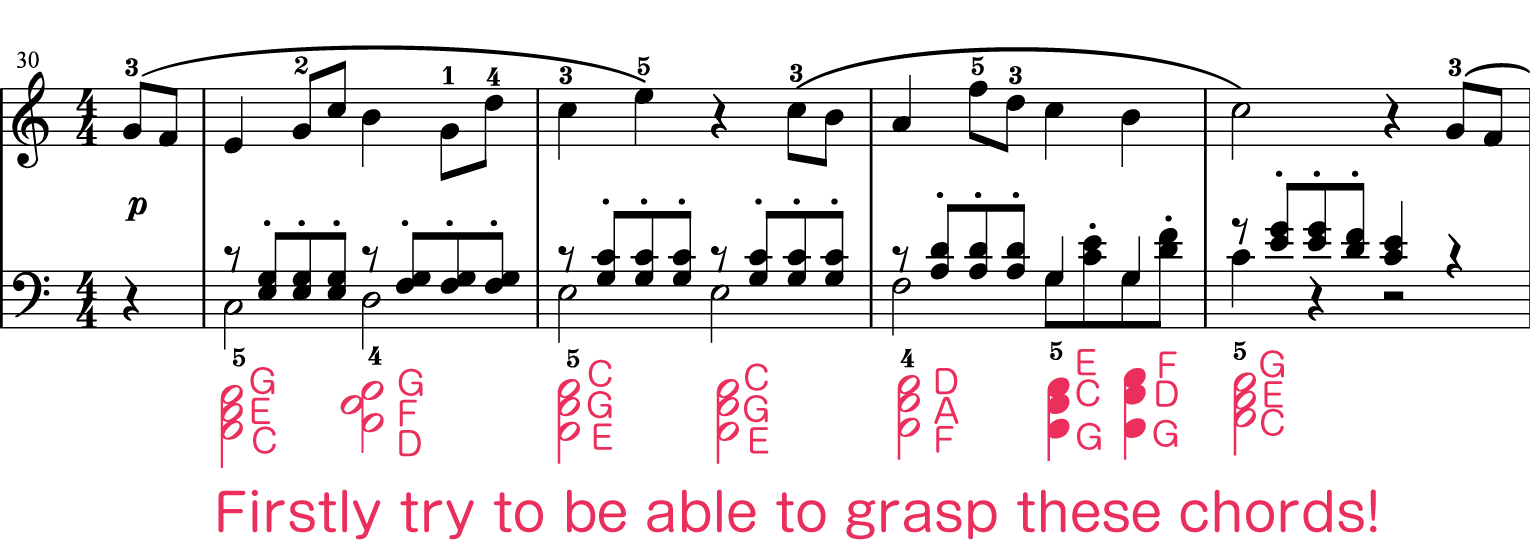
- How does the form of your left hand change?
- When does it change?
Recognize them and you can get used to the chords which change one by one.
4. Expression
When you become able to play smoothly with both hands, let's think about musical expression as the next step.
In our recording, you can listen to the three different ways of the expression. Please check it out!




2. Dolly Awakes
1. Grabing the Chords
Firstly, master the forms of the hands and learn the transition of the harmony.
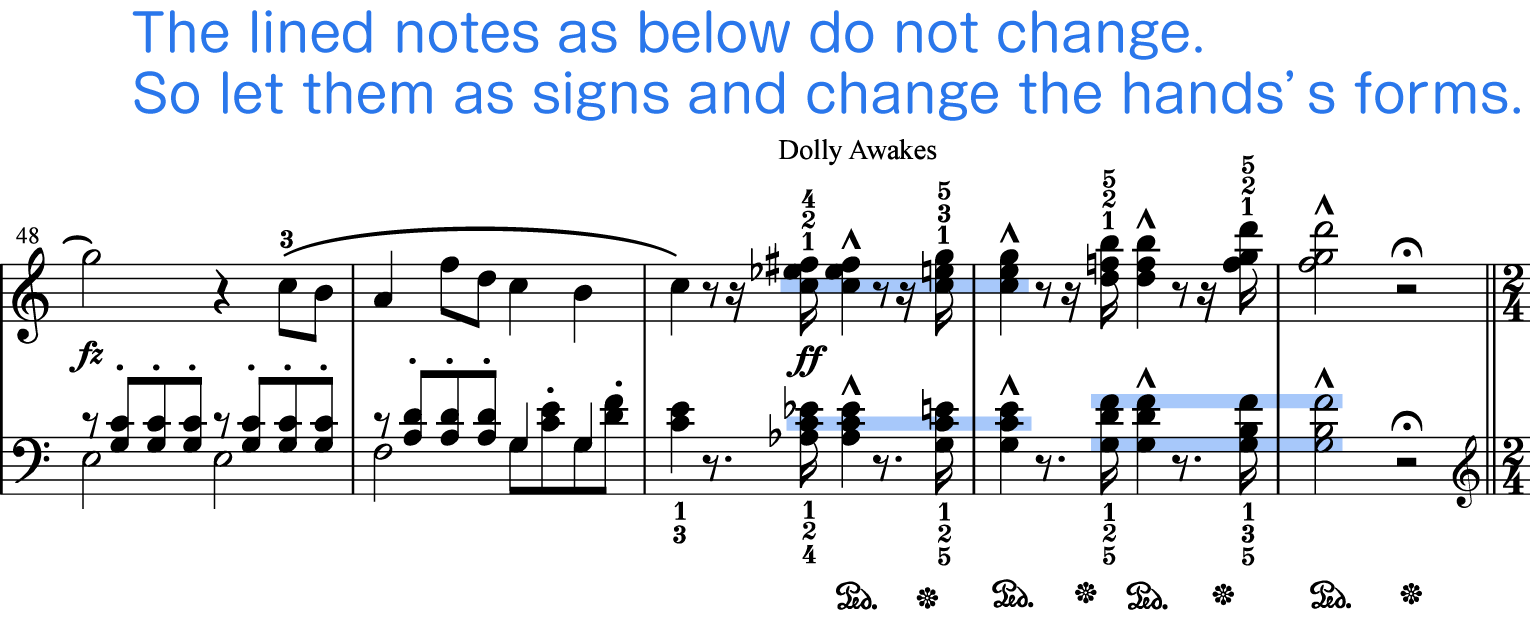
2. Sense of Rhythm
Try thinking the first one of the two consecutive same chords is extra or additional (like grace notes). You can play the passage of chords with a sense of rhythm.

4. Dolly Dances
1. How to Practice
Two groups of the notes form each position of the chords. By understanding that, you can play with ease.
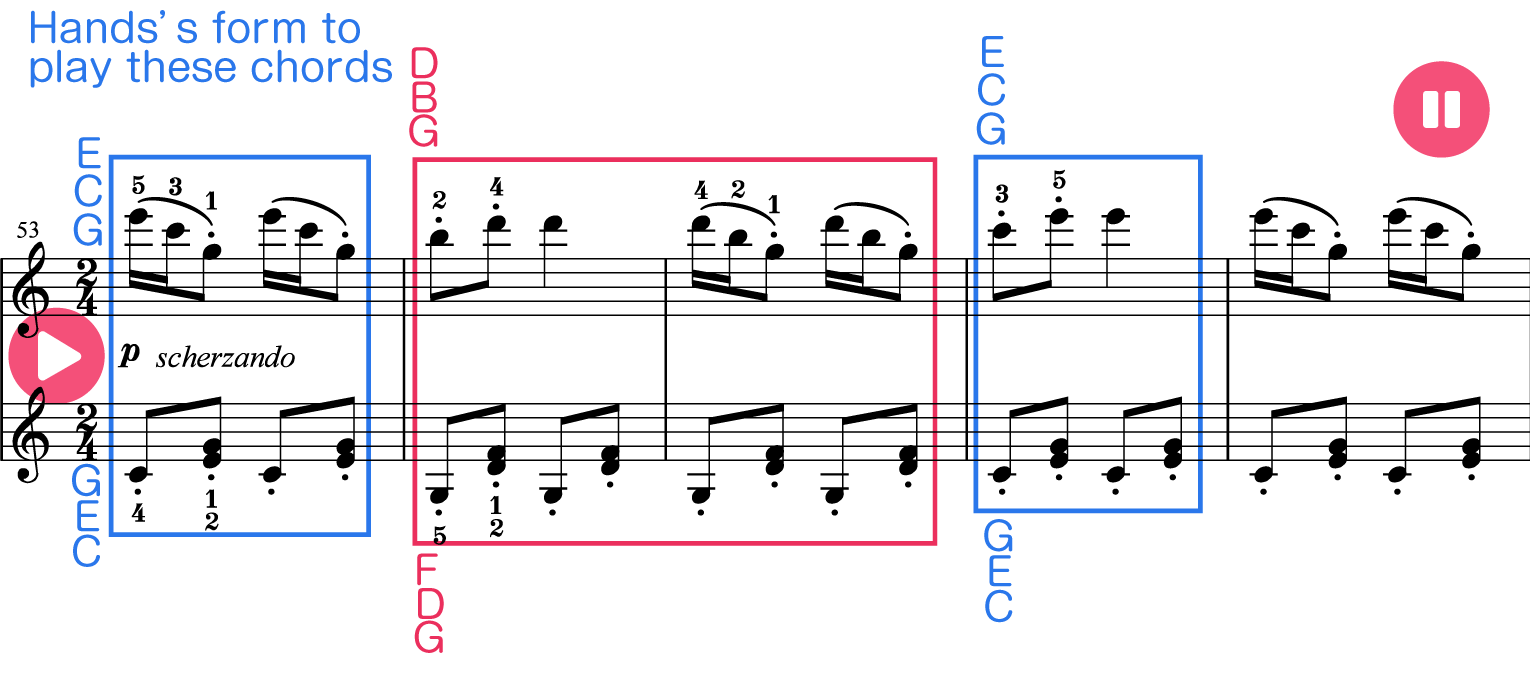
2. Fix the Fingering
1. One Handed Practice
To play the melody in legato, fix the fingering and keep it correct.
Use the fingering sheet!

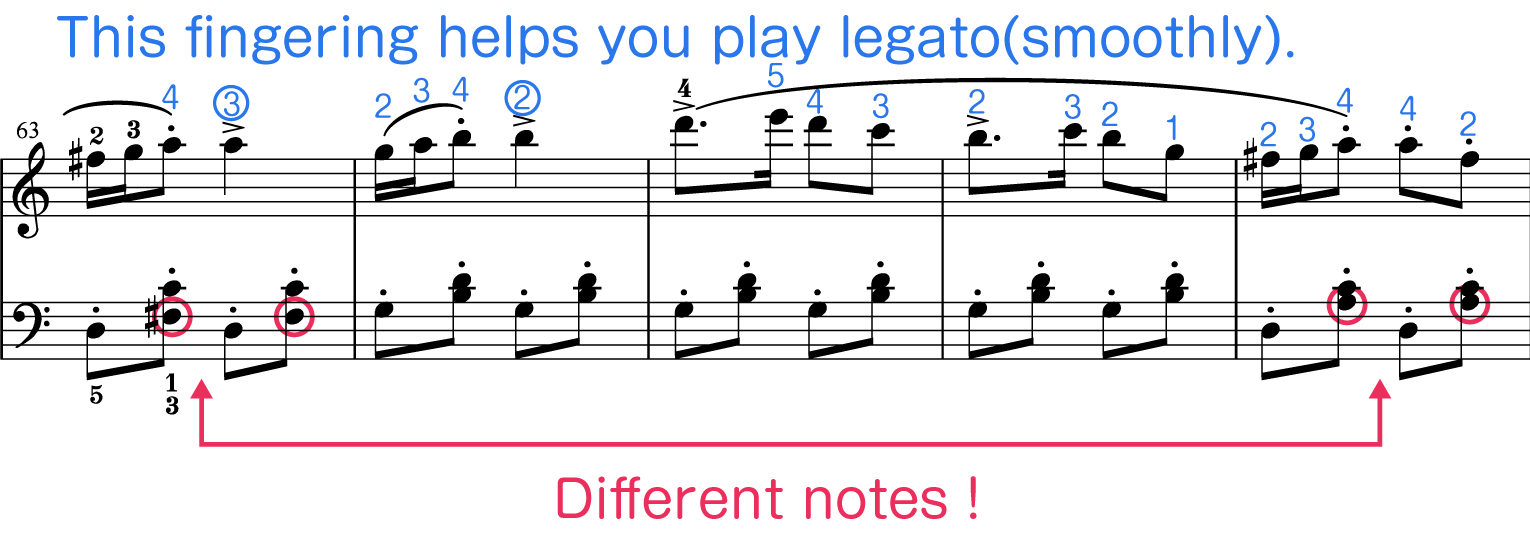

Don't miss the different notes(F# and A) in the left hand part.
2. Singing Practice with accompaniment
If you play with the both hands at the outset, you easily get out of the tempo.
Firstly, master the correct rhythm by singing the melody while playing the accompaniment.
3. How to Play Consecutive Sixths

When you play the consecutive sixths, maintain your hand shape fixed and move it looking at the thumb. That way, you can shift the hand position easily.
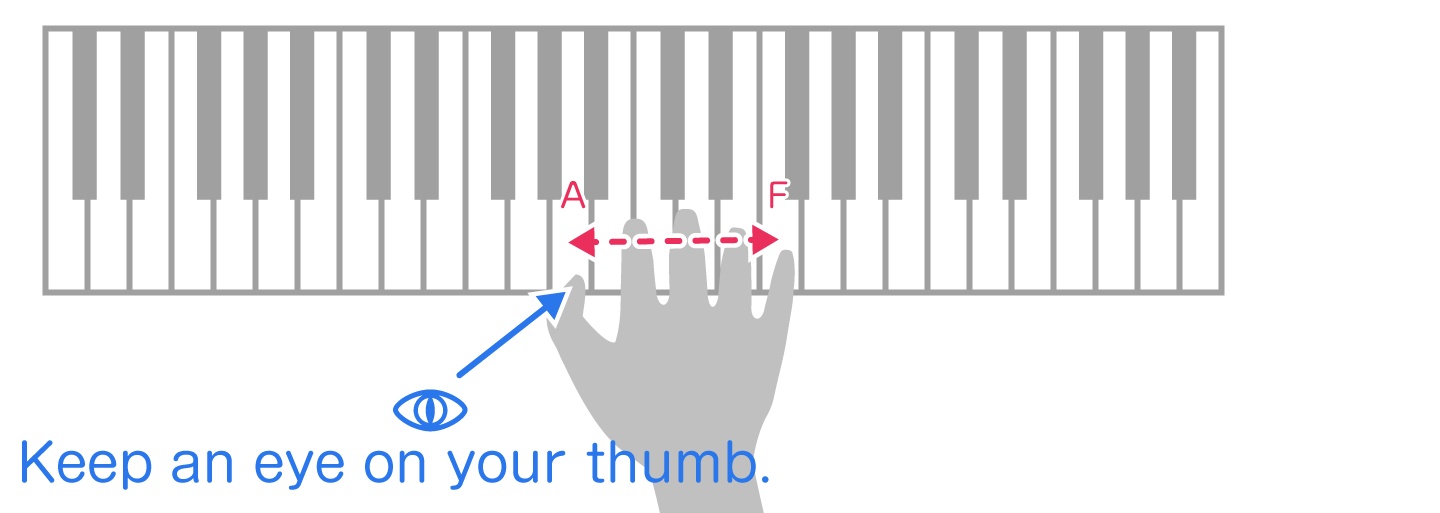
4. Inserting Chords into the Passage of 16ths
It is hard to insert the chords by the left hand into the middle of the passage of 16th notes.
Divide this section into the three blocks. In each section, clap your hands on the accent while singing the melody.
This is an effective practice to master the timing.
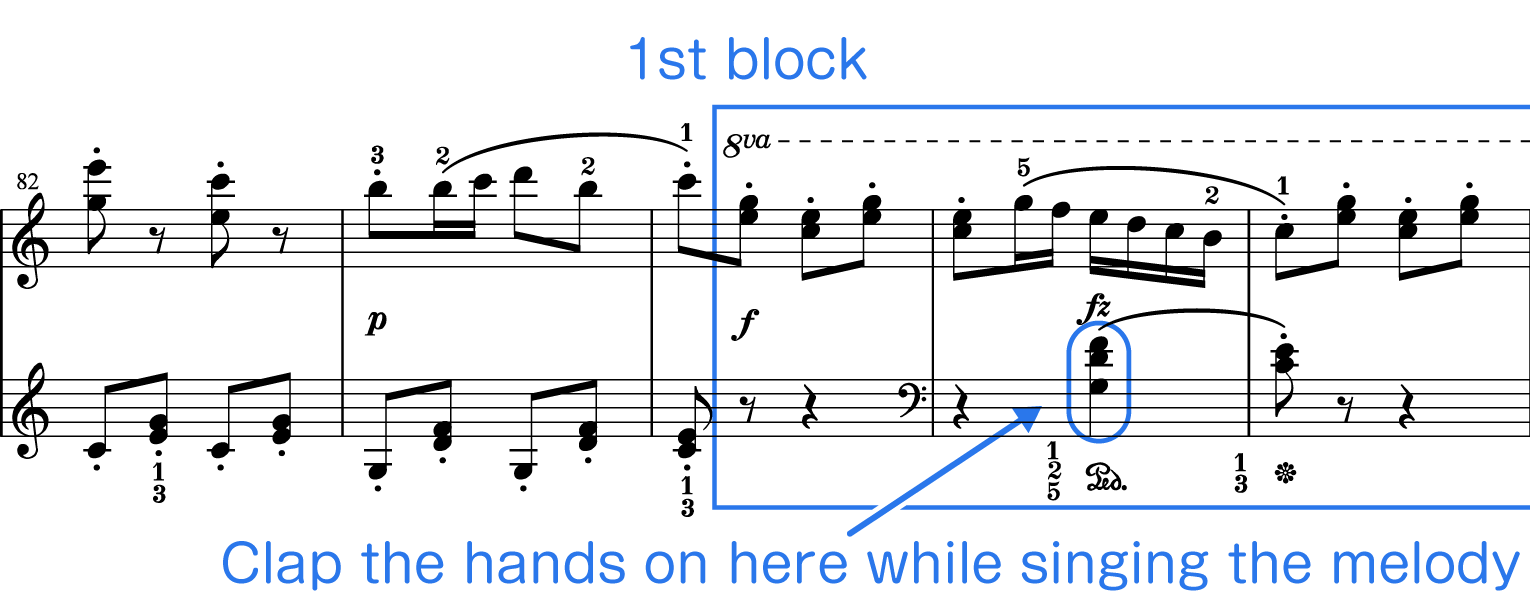


5. The Last Two Cosencutive Chords
In the same way as "Dolly Awakes" try thinking the first one of the two consecutive same chords is extra or additional(like grace notes). You can play the passage of chords with a sense of rhythm.


